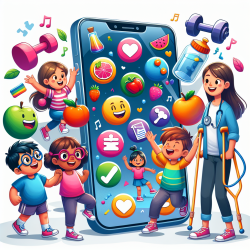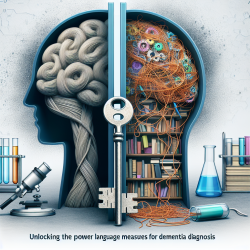Unlocking Potential: Mobile Apps for Kids with Disabilities
In the realm of speech-language pathology and child development, leveraging technology to create positive outcomes is a game-changer. A recent study titled Designing User-Centered Mobile Health Initiatives to Promote Healthy Behaviors for Children With Disabilities: Development and Usability Study sheds light on how mobile health (mHealth) tools can be pivotal in promoting healthy behaviors among children with disabilities.
Understanding the Research
The study focuses on the Jooay app, a mobile platform designed to connect children with disabilities to community-based leisure and physical activity programs. By employing a participatory action research approach, the app was developed with direct input from stakeholders, ensuring it meets the real needs of its users. This user-centered design is crucial in creating tools that are not only accessible but also engaging.
Key Findings
- User-Centered Design: The app was developed with feedback from caregivers, health professionals, and community leaders, ensuring it addresses the specific needs of children with disabilities.
- Engagement Patterns: While initial downloads were high, sustained engagement required ongoing interaction and updates to keep users engaged.
- Urban vs. Rural Access: The study found that app usage was more concentrated in urban areas, highlighting a gap in access for rural populations.
Implications for Practitioners
For practitioners in speech-language pathology and related fields, this study offers valuable insights:
- Incorporate Technology: Utilize apps like Jooay to provide families with resources that might otherwise be inaccessible.
- Data-Driven Decisions: Use app analytics to understand user behavior and tailor interventions accordingly.
- Engage Stakeholders: Collaborate with families and communities to ensure tools are relevant and effective.
Encouraging Further Research
The study underscores the importance of continuous research and development in mHealth. By understanding user preferences and barriers to engagement, practitioners can better support children with disabilities in achieving their full potential.
For those interested in delving deeper into the study, the original research paper is available here: Designing User-Centered Mobile Health Initiatives to Promote Healthy Behaviors for Children With Disabilities: Development and Usability Study.










